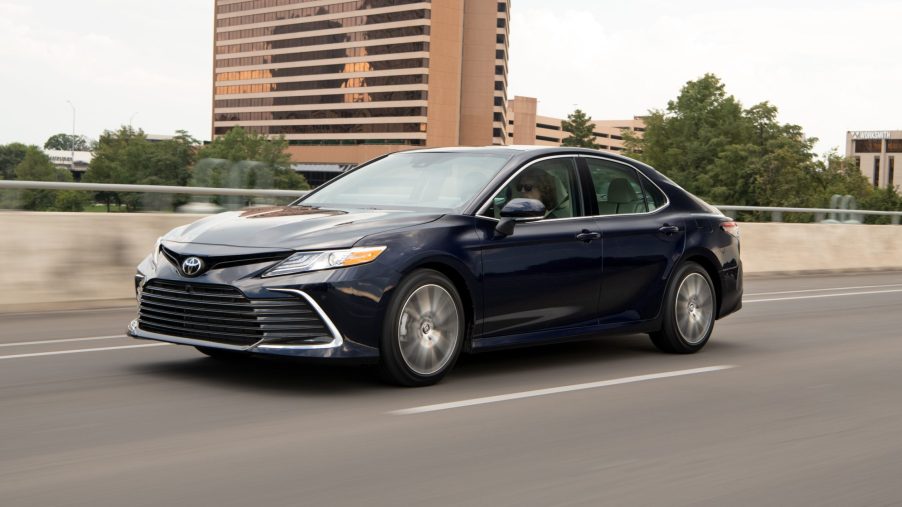
Used Car Shoppers Can’t Go Wrong With a 2012-2017 Toyota Camry
Shopping for a used car may require an additional amount of research to ensure you pick a reliable vehicle, but the potential cost savings are often worth the extra time spent shopping. For anyone looking for an excellent used sedan, the 2012-2017 Toyota Camry model years are an excellent choice, according to Consumer Reports. Here’s what you can expect if you opt for this used vehicle.
The benefits of choosing a 2012-2017 Toyota Camry
When shopping for a used car, it’s a good idea to be on the lookout for excellent reliability ratings, decent tech, and a comfortable ride — all of which the 2012-2017 Toyota Camry offers, according to Consumer Reports. The Camry was redesigned in 2012 and refreshed in 2015, so these model years offer a fair amount of tech despite their age.
The Camry has an impressive fuel economy that typically hovers around 28 miles per gallon combined for each of these model years. Test drivers found that the hybrid version of the Camry could achieve 38 miles per gallon, which is even more notable for the segment.
The interior of this Camry was also improved with the 2012 redesign. Consumer Reports says that it delivers “generous room and a comfortable ride,” as well as a touchscreen infotainment system that is significantly more advanced than previous iterations of this vehicle.
This used Camry handles well, with responsive steering. Test drivers do note that it is definitely not a sporty vehicle, but that this isn’t a deal-breaker: the driving experience is pleasant regardless, particularly in models made after 2015.
The pricing of each model year
Although there are not many drastic changes between the different years of the Toyota Camry, the pricing does vary depending on which year you opt for. The most affordable is the 2012 Camry, which retails anywhere from $8,700 to $10,600.
As you head into more recent options, the price steadily begins to climb. The 2013 Camry starts at $9,800; the 2014 at $11,100; the 2015 at $12,700; the 2016 at $13,775; and the 2017 at $15,975.
These price differences are particularly worth paying attention to due to the fact that there were no major redesigns during this period. The Camry did undergo a refresh in 2015, meaning that it may be worth paying a little extra for a more recent model year: you’ll get an upgraded touch screen, more pleasant styling details, a quieter cabin, and improved crash-test results. In regard to predicted reliability and owner satisfaction, however, there are no differences between the 2012 Camry and the more recent 2017 Camry.
What to expect from a used Camry
If you decide to shop for a 2015-2017 Toyota Camry, you’ll get the benefit of a refreshed vehicle. According to Consumer Reports, the Camry’s 2015 refresh included changes to the suspension and the electronics, as well as the exterior styling. The Camry also received upgraded controls, which test drivers found to be more intuitive than in previous iterations.
Other than these changes, however, the 2015-2017 Camry doesn’t differ significantly from the 2012-2014 Camry. Test drivers praise the Camry’s ability to handle sharp corners, stating that it remained predictable and secure even at high speeds. Consumer Reports also notes the spacious interior, as well as the numerous standard features, including a backup camera.
Opting for a used vehicle is often an excellent way to save some money without sacrificing quality. It’s hard to go wrong with any Toyota Camry from 2012-2017 – each offers stellar predicted reliability ratings, comfortable interiors, and good fuel economy for the class.


